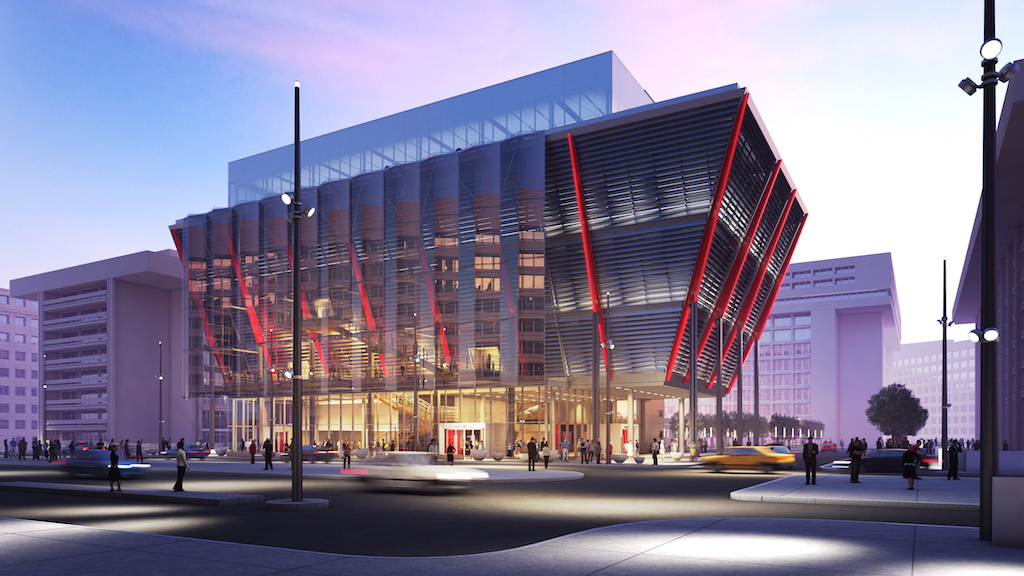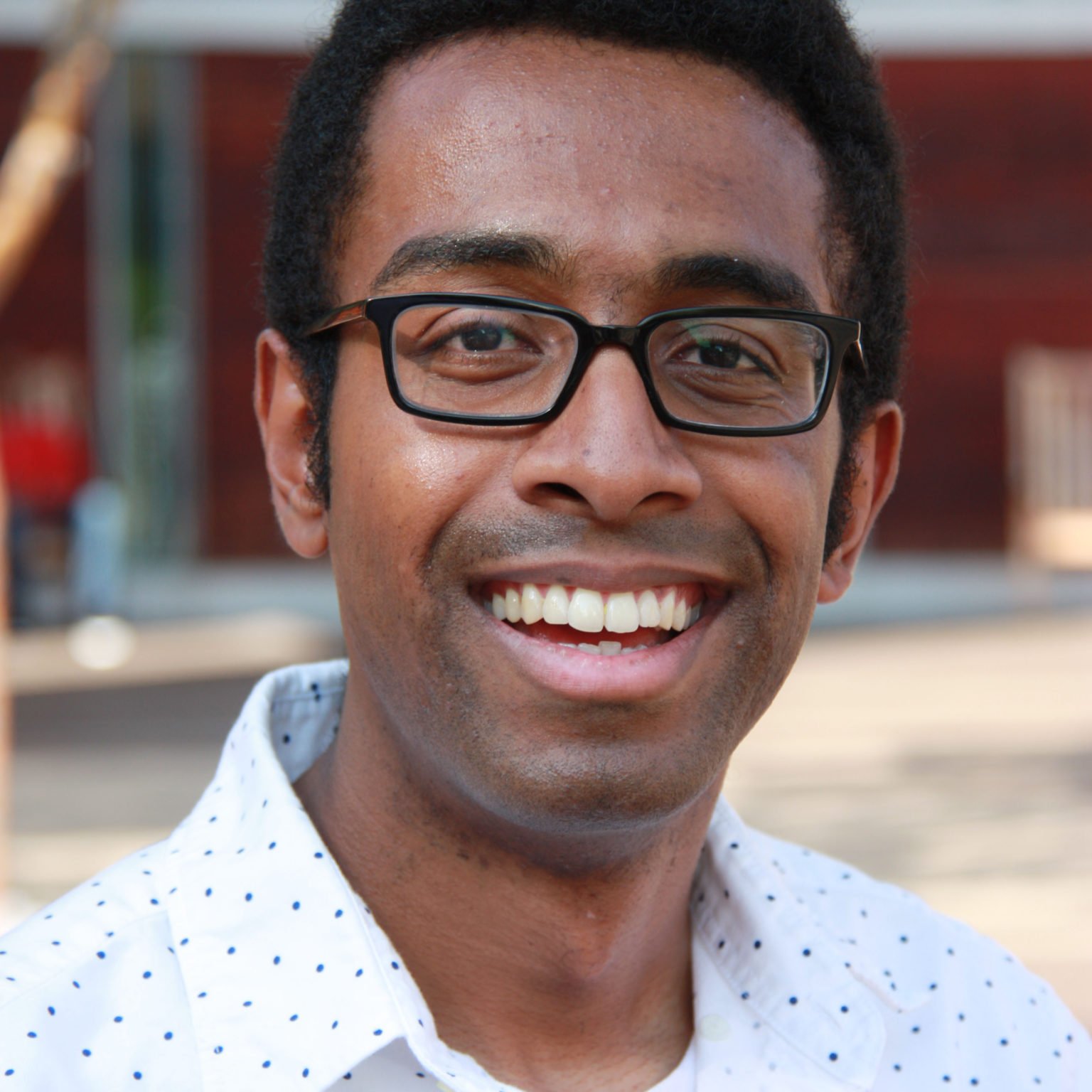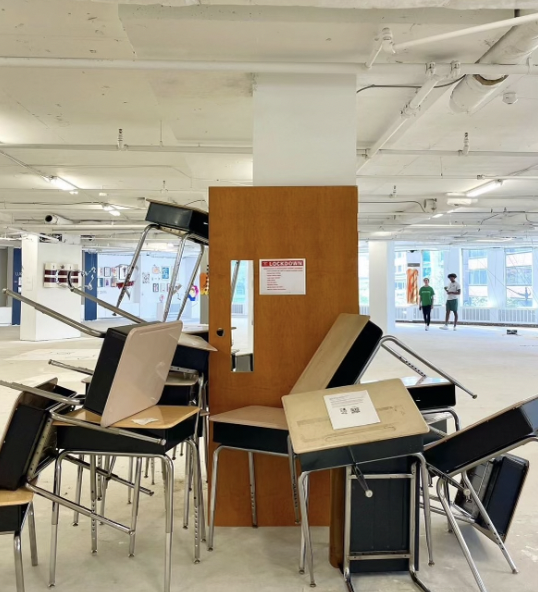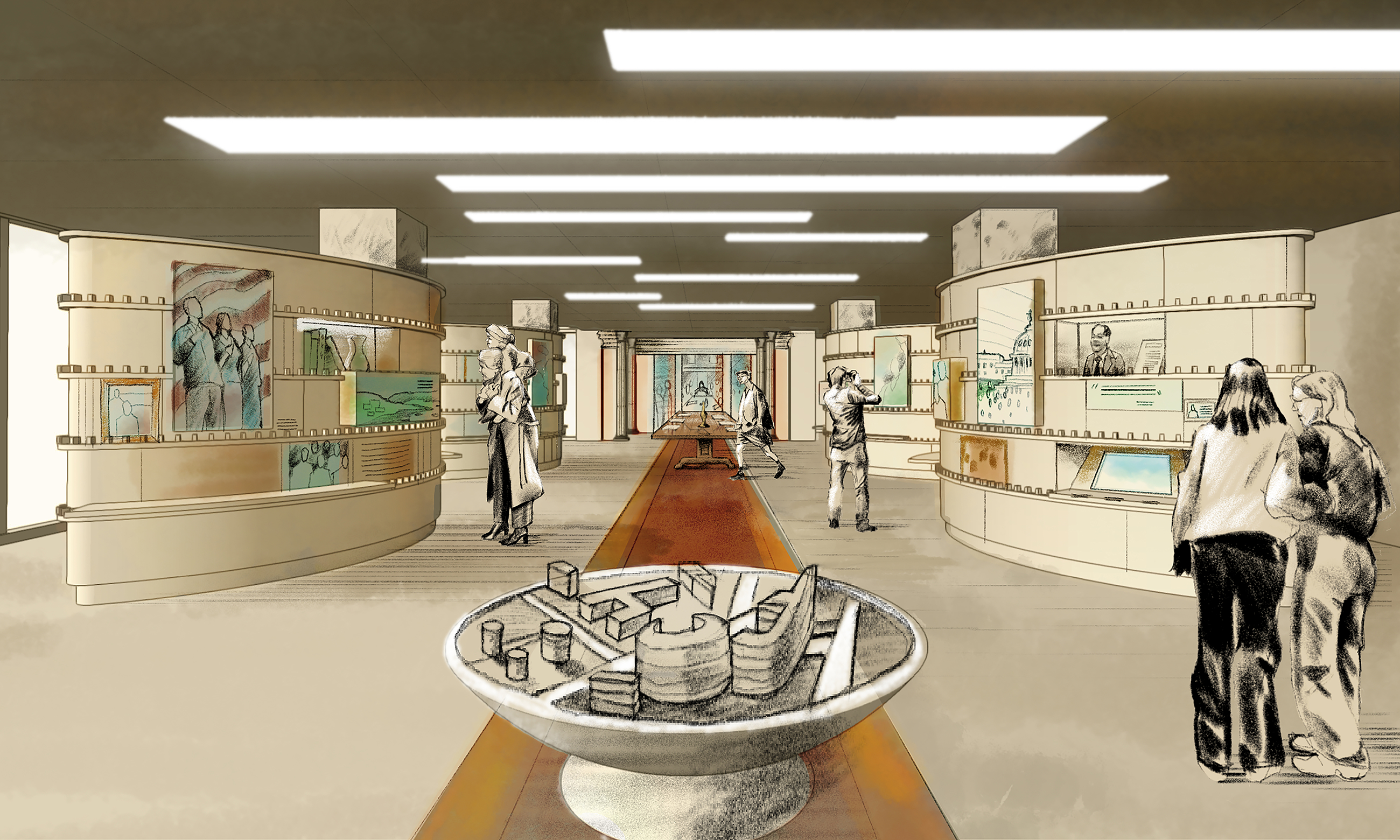When Hobby Lobby president Steve Green, fresh from his anti-contraception victory at the Supreme Court in 2014, announced plans to open a Museum of the Bible near the Mall, the project was attacked as Green’s next campaign to Christianize America: a Trojan horse positioned steps from the US Capitol, from which Green would continue his assault on the wall between church and state.
When the museum opens this time next year, the faithful may find themselves feeling less like Trojan soldiers than ancient Israelites wandering 40 years in the desert. If there is a conspiracy at work in the new museum’s location—two epic blocks from the Mall at Third and D streets, Southwest—it’s DC planners’ long-term goal to draw foot traffic south of the Mall, to parts of the city previously untouched by tourism.
“They had a vision that this building could be a cornerstone of expansion to the river,” Cary Summers, the Bible museum’s president, told Washingtonian last year. “They wanted a beacon that would say, ‘Come on down.’ ”
Two blocks to the west of the museum’s site, the International Spy Museum is constructing a flashy new building, designed by the British architecture firm Rogers Stirk Harbour & Partners and DC’s Hickok Cole, at L’Enfant Plaza, assisted by $50 million in city bond funding. Its debut in 2018 will open a corridor directly south of the Smithsonian’s most trafficked museum, Air and Space. Banneker Overlook, a lonely park at the end of Tenth Street, Southwest, has also been earmarked for new museums.
Traditionally, Washington’s most popular attractions have been kept in a tight loop around the Mall—the Lincoln Memorial, with 7 million visitors a year, followed by the Vietnam, World War II, and Korean memorials. Tourists who venture off typically head northeast, toward Ford’s Theatre or the White House.
Reasons to head south, however, are growing. Nats Park, which already attracts 2.6 million people a year, is increasingly surrounded by convivial brewpubs, ice-cream shops, and other eateries; the new stadium planned for DC United three blocks away will only liven up the pre-game scene. At Sixth Street and Maine Avenue, Southwest, Arena Stage’s glassy expansion has allowed it to increase its programming. Across the street, the Maine Avenue Fish Market will soon get a facelift and a new market hall as part of the extensive Wharf development, now under way, whose mile-long boardwalk will be a draw in itself.
At present, however, any southbound route to this island of activity brings pedestrians past lifeless L’Enfant Plaza, sleepy apartment towers, and the drive-through-ridden hellscape of South Capitol Street. The trail from the Mall to the water needs better beacons.
But another aspect of the status quo holds the keys to a solution: The feds are desperately seeking sites for new museums, a struggle that has been going on nearly since Pierre L’Enfant laid out the capital. In 1902, a commission led by Michigan senator James McMillan proposed uses for newly dredged land along the Potomac River, leading to a major expansion west into Foggy Bottom and the creation of the Lincoln and Jefferson memorials. In the 1940s, the National Capital Planning Commission envisioned extending the Mall, but east, along East Capitol Street to what’s now RFK Stadium.
In the second half of the 20th century, the focus shifted to Southwest, particularly L’Enfant Plaza, a 1968 development that never became the gathering spot its architects intended. The vision was renewed in the early 2000s when an update to the McMillan Plan stated, “If well designed and strategically located, [museums in Southwest] could spark investment in stores, hotels and office buildings and become sources of community pride and identity.” In 2009, the commission announced the SW Ecodistrict Initiative, which seeks to draw cultural organizations to L’Enfant Plaza while making the area more environmentally sustainable.
The Mall’s prestige has frustrated many of these plans. Ethnic groups especially have resisted any site that might suggest second-rate status. That’s what killed early efforts to place the National Museum of the American Latino and the National Museum of African American History and Culture in Southwest.
Private museums have been more willing to accept a spot close enough to lure the Mall’s hordes. At the same time, they have little stake in preserving its monumental dignity. One could imagine Southwest emerging as a louder commercial counterpoint to the Mall as residents and visitors alike start etching these vague blocks onto their mental maps of the city.
This article appears in our September 2016 issue of Washingtonian.



















